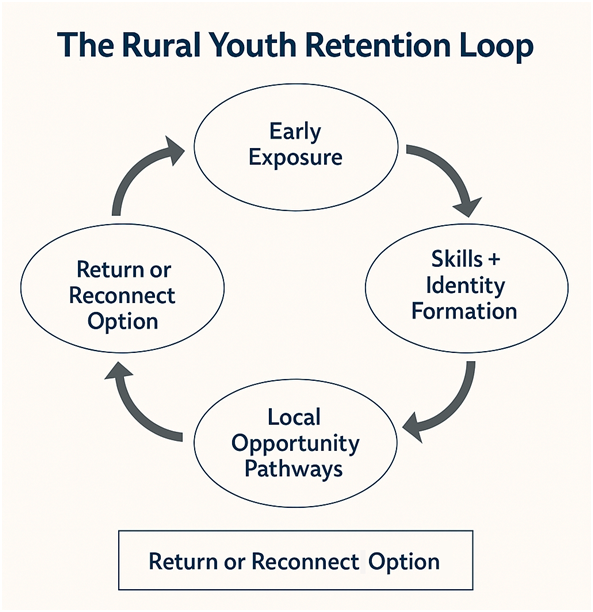The Foothill Corridor - Chapter 17: Community Education and Youth Retention
Chapter 17
Community Education and Youth Retention
If the Foothills Corridor wants a future, it has to start with its young people—and the ecosystem that educates, empowers, and anchors them in place. In a region where generational talent has long been exported to urban centers, the challenge now is not just to prepare youth for opportunity—but to build opportunity where they already are.
This isn’t a matter of curriculum reform. It’s about reimagining education as economic infrastructure and designing systems that link learning directly to local relevance, employment, and civic life.
The Stakes of Staying—or Leaving
For decades, the message—explicit or implied—was clear: to succeed, you had to leave. Smart kids went to Raleigh or Charlotte. Skilled tradesmen chased bigger paychecks out of state. Those who stayed were seen as the ones who “couldn’t get out.”
That mindset created a cycle: brain drain, civic disengagement, cultural stagnation. But that narrative is beginning to shift.
Programs like K-64 in Catawba County, Career & College Promise, and community college partnerships are rewriting the script. They’re showing students that a future in the Foothills is not only possible—it can be innovative, purposeful, and secure.
Community Education as Place-Based Strategy
Community education is more than school—it’s a regional development strategy. When it works, it creates a loop:
· Students learn relevant skills.
· Employers help shape those skills.
· Students stay, work, and reinvest in their communities.
· Local institutions grow stronger.
It’s about alignment, not just academics. That’s why the most effective programs focus on:
· Early exposure to careers (as early as middle school).
· Dual enrollment and credential stacking.
· Internships with local businesses.
· Soft skills development tied to civic engagement.
· On-ramps to entrepreneurship, not just employment.
The Role of Community Colleges
Community colleges like CVCC, Western Piedmont, and Wilkes are not just educational institutions—they’re regional anchors. Their agility, local leadership, and employer partnerships make them uniquely equipped to adapt to workforce needs. Retention won’t come from slogans—it’ll come from relevance.
With the right investment, they can become the front lines of youth retention:
· Offering high-tech and healthcare pathways.
· Incubating small businesses and student-led ventures.
· Bridging high school to adulthood in practical, affordable ways.
Culture, Not Just Career
But keeping youth isn’t just about jobs—it’s about identity. Young people need to see themselves reflected in the region’s story. That means:
· Creating public spaces that feel modern, safe, and expressive.
· Supporting the arts, digital media, and music scenes.
· Encouraging civic involvement through youth boards, advisory councils, and leadership pipelines.
Retention is emotional before it’s logistical. When young people feel seen, respected, and engaged, they’re more likely to stay.
Local Government’s Role
City councils, school boards, and economic developers must treat youth retention as a strategic priority—not just a feel-good initiative. That means:
· Budgeting for mentorship and career readiness.
· Incentivizing youth-led ideas.
· Building housing, transit, and recreation infrastructure with young families in mind.
It also means listening differently—engaging students and young adults in decisions that shape the future they’ll inherit.
What Success Looks Like
· Fewer college-bound students “cutting ties” with their hometowns.
· Young professionals choosing to return—or never leave.
· Local employers tapping into a talent pool that isn’t being drained away.
· A region that sees its youth not as a problem to solve—but as partners in progress.
Why It Matters
The long-term viability of the Foothills Corridor depends on whether it can transform its greatest liability—youth flight—into its greatest strength.
The good news? The pieces are already here.
· Strong community colleges.
· Employers hungry for talent.
· A generation that values purpose over prestige.
Skills training builds careers, but cultural education builds community. If young people don’t inherit a sense of place, pride, and purpose along with their technical skills, they’ll take their talents elsewhere.
What’s needed now is coordination, visibility, and belief. Because when a region stops exporting its future, it starts building one. And for the Foothills, that might be the most revolutionary act of all.


